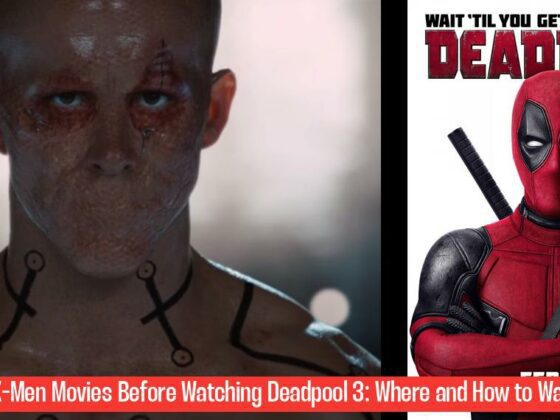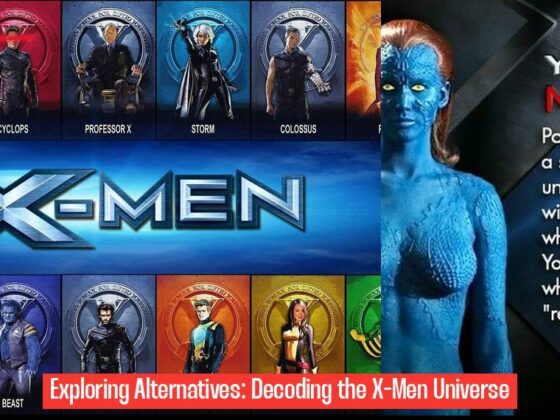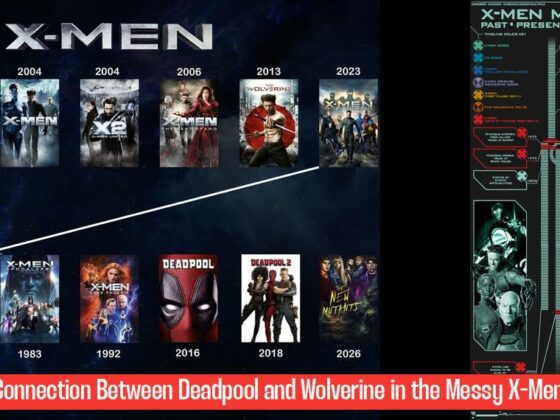How to Watch the X-Men Movies in Chronological Order
So you want to dive into the world of mutants, but you’re not sure where to start? The X-Men franchise is a sprawling saga full of incredible characters, epic battles, and thought-provoking themes. With so many movies, it can be a bit overwhelming to know where to begin. But fear not, because you’ve come to the right place!
This guide will walk you through the best ways to watch the X-Men movies, whether you want to experience the story in chronological order or follow the order in which they were released. We’ll break down each option and provide some insider tips to make your X-Men journey as enjoyable as possible.
Chronological Order: Embark on a Mutants’ Journey
The chronological order is the way to go if you want to experience the X-Men saga as it unfolds in the universe. It’s the best way to understand the origins of the mutants, their struggles, and the impact of their actions on the world. Here’s the chronological order for the X-Men movies:
-
X-Men: First Class (2011): This movie takes us back to the 1960s, where we meet a young Charles Xavier and Erik Lehnsherr (Magneto) as they forge their destinies. It’s a great starting point to understand the rivalry between these two iconic characters and the founding of the X-Men. You’ll witness the birth of the team, their early missions, and the seeds of future conflicts.
-
X-Men: Days of Future Past (2014): This time-traveling adventure takes us to both the 1970s and the future dystopian world where mutants are hunted by Sentinels. It’s a crucial film in the timeline, as it addresses the consequences of the X-Men’s past actions and introduces the threat that will shape the future.
-
X-Men Origins: Wolverine (2009): This movie delves into the backstory of the ferocious Wolverine, exploring his origins, his transformation into a mutant, and his early encounters with danger. It provides a deeper understanding of Wolverine’s character and his connection to the X-Men.
-
X-Men: Apocalypse (2016): We jump ahead to the 1980s, where the ancient mutant Apocalypse awakens and seeks to reshape the world. This movie showcases the X-Men’s growing strength and their ability to unite against a formidable foe.
-
X-Men: Dark Phoenix (2019): This film picks up where “Apocalypse” left off, exploring the consequences of Jean Grey’s transformation into the powerful Phoenix. It’s a story of personal struggle, sacrifice, and the challenges of controlling immense power.
-
X-Men (2000): Now we move into the present day. This movie introduces us to the core X-Men team as they face off against the Brotherhood of Mutants, led by Magneto. It’s a classic superhero film that sets the stage for the franchise.
-
X2: X-Men United (2003): This sequel deepens the conflict between the X-Men and Magneto, introducing new characters and raising the stakes for the mutant superhero team. The movie’s action-packed sequences, compelling characters, and compelling plot make it a fan favorite.
-
X-Men: The Last Stand (2006): The third installment in the original trilogy explores the consequences of the previous films, as the X-Men face a powerful new threat that threatens to divide humanity and mutants forever.
Following this order allows you to witness the evolution of the X-Men, their relationships, and the impact of their choices on the world. You’ll experience the rise of Magneto’s power, the challenges of integrating mutants into society, and the constant struggle for acceptance and equality.
Release Order: Experience the X-Men Saga as It Unfolded
If you’d rather follow the journey as it was presented to audiences, then watching the X-Men movies in release order is the way to go. This allows you to experience the franchise in its original context, taking in the surprises and twists as they were originally unveiled.
Here’s the release order:
-
X-Men (2000): This movie launched the entire franchise, introducing us to the iconic characters and the world they live in.
-
X2: X-Men United (2003): This sequel expands upon the story and introduces new characters, such as Nightcrawler, Mystique, and the powerful William Stryker.
-
X-Men: The Last Stand (2006): This movie concludes the original trilogy, bringing together the elements of previous films and presenting a climactic battle filled with action and emotion.
-
X-Men Origins: Wolverine (2009): This prequel focuses on the origins of Wolverine, his journey to become a mutant, and his early encounters with the X-Men.
-
X-Men: First Class (2011): This prequel focuses on the early days of Professor X and Magneto, their formation of the X-Men, and the events that led to their rivalry.
-
The Wolverine (2013): This movie follows Wolverine as he faces off against a powerful enemy in Japan, exploring themes of honor, redemption, and the consequences of his past.
-
X-Men: Days of Future Past (2014): This time-traveling adventure takes us back to the 1970s, where the X-Men must prevent a future where mutants are hunted by Sentinels.
-
Deadpool (2016): This R-rated superhero film introduces the irreverent and comedic character of Deadpool, a mutant with incredible healing abilities and a twisted sense of humor.
-
X-Men: Apocalypse (2016): This movie picks up where “Days of Future Past” left off, introducing the ancient mutant Apocalypse as a powerful new threat to the X-Men.
-
X-Men: Dark Phoenix (2019): This film continues the story from “Apocalypse,” exploring the consequences of Jean Grey’s transformation into the powerful Phoenix.
-
Logan (2017): This film, set in the future, follows an aging Wolverine as he struggles to protect a young mutant girl from a powerful and dangerous force.
Reading List: Which 5 Superheroes Were Expelled from the Justice League?
-
Deadpool 2 (2018): This sequel deepens the hilarious and action-packed story of Deadpool, exploring his relationships with Cable, Domino, and the X-Force.
Following the release order allows you to experience the evolution of the franchise, the changes in storytelling, and the changing landscape of the X-Men universe. You’ll also get to enjoy the movies in the context of their original reception, witnessing the rise of the X-Men’s popularity and the impact of each movie on the superhero genre.
Choosing the Right Viewing Order: What’s Best for You?
Ultimately, the best way to watch the X-Men movies depends on your preferences as a viewer. If you’re a newcomer to the franchise, you might prefer to start with the release order, as it’s the most straightforward way to experience the story as it unfolded.
However, if you’re looking for a more immersive and thought-provoking experience, the chronological order allows you to delve deeper into the X-Men universe and understand the interconnectedness of their stories.
No matter which order you choose, you’re guaranteed to be captivated by the X-Men’s adventures, their struggles, and their commitment to creating a better world for both humans and mutants.
So, grab your popcorn, settle in, and prepare to be transported to a world where mutations are not a curse, but a gift. The X-Men are waiting!
What is the recommended order to watch the X-Men movies for a chronological experience?
To watch the X-Men movies in chronological order, start with “X-Men: First Class” (2011), followed by “X-Men: Days of Future Past” (2014), “X-Men Origins: Wolverine” (2009), “X-Men: Apocalypse” (2016), and “X-Men: Dark Phoenix” (2019).
Why is watching the X-Men movies in chronological order beneficial?
Watching the X-Men movies in chronological order allows viewers to understand the origins of the mutants, their struggles, and the impact of their actions on the world as the saga unfolds in the universe.
What insights can viewers gain by starting with “X-Men: First Class” in the chronological order?
Starting with “X-Men: First Class” provides a great understanding of the rivalry between Charles Xavier and Erik Lehnsherr, the founding of the X-Men, their early missions, and the seeds of future conflicts.
Which X-Men movie explores Wolverine’s backstory and early encounters with danger?
“X-Men Origins: Wolverine” (2009) delves into the backstory of Wolverine, exploring his origins, his transformation into a mutant, and his early encounters with danger, providing a deeper understanding of his character and connection to the X-Men.



